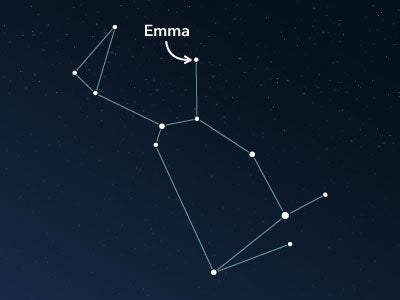The constellation Lupus
Caratteristiche
- Nome latino
- Lupus
- Emisfero
- Emisfero meridionale
- Visibilità
- April - September
- Area
- 334 deg²
- Stella più luminosa
- α Lupi (HIP number 71860)
- Specialità
- Open star clusters, globular clusters, galaxies, planetary nebulae

The Lupus, Latin for Wolf, is an inconspicuous constellation in the southern celestial sky. It is one of the 48 ancient constellations that were spread by Claudius Ptolemy. In its area are several interesting deep-sky objects.
Hemisphere, visibility, and area
The constellation Lupus lies in the southern sky and can be observed from the entire southern hemisphere. North of the equator, it can only be seen up to the 35th parallel. This corresponds to regions such as Los Angeles or Oklahoma City in the United States, as well as the north of Morocco in West Africa or the island of Cyprus in the Mediterranean.
Around 2,000 years ago, the constellation could still be seen from parts of southern Europe, but due to the precession movement of the earth, Lupus is moving further south.
The best time to watch the constellation is between April and September, during which it appears with an area of approximately 334 square degrees in the night sky. With this size, Lupus ranks 46th among all the other 88 constellations.
In sky maps, Lupus is visualized with a variety of stars, but only three are brighter than 3 mags. The most shining star is α Lupi (Alpha Lupi), with an apparent magnitude of roughly 2.25. It is located approximately 465 light-years from earth.
Due to its faint stars, finding Lupus in the night sky can be challenging. The six surrounding constellations can therefore give a good orientation. To the north or northeast lie the striking Scorpius and Libra. Both constellations are located on the ecliptic and are particularly known in astrology. In the northwest, Hydra (often called water snake) can be found, and directly below it is the Centaurus. To the south and southeast, the Circinus and Norma constellations are adjacent.
Specialties in the constellation
The Milky Way stretches through the southern region of Lupus, which contributes to a series of nebulous objects. These include several globular clusters, open star clusters, galaxies, and planetary nebulae.
The brightest open star cluster is NGC 5822, with an apparent magnitude of about 6.5. It contains around 100 stars and is larger in size than the full moon. Its distance from earth is estimated to be approximately 2,500 light-years. NGC 5822 can be perceived as a hazy spot with the help of a prism binocular. The object lies in the southern area of the Lupus.
To the west lie two spiral galaxies and a planetary nebula. It is called Wolf-Rayet, Retina Nebula, or simply IC 4406. The nebula contains the hottest stars in the entire universe, and its distance to earth is approximately 5,000 light-years.
History
The constellation Lupus was already known in ancient times, but it received its current name only in the Middle Ages.
Initially, different creatures were interpreted in the constellation. The Babylonians saw the hybrid creature UR-IDIM, which has a human head and body but the limbs of a lion. The Greeks named it "Therion" (meaning "animal"), while the Romans gave the constellation the names "Fera" (meaning "wild animal") or "Hostia" (meaning "sacrificial animal"). In contrast, the Arabs saw the constellation as a leopard or panther.
The name "Wolf" first appeared on the Alphonsine tables around 1270. However, it was not until the 19th century that this name became more widely used.
PubblicatoLeggi altri articoli interessanti

An overview of all 88 constellations
Learn more about all 88 constellations and read interesting information about the mythology, visibility, and features.

App Planetario
Discover the night sky with our planetarium app!
Available for iOS and Android.

Dai un nome a una stella nella costellazione Wolf
Name a star in a constellation and create something that lasts for eternity.